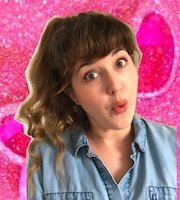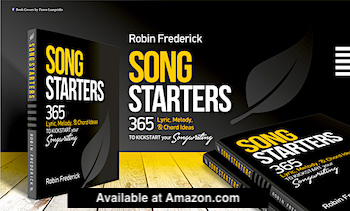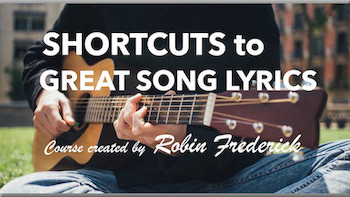K-Pop is a high energy, glossy style that’s built on teenage dreams, catchy hooks, pulsing rhythms, and a collision of Korean and English lyrics. Recently, the demand for this genre has exploded—more than doubling since 2020. There are definitely opportunities here for songwriters and music producers. So, let’s take a listen to a few monster hits from the current and classic K-Pop charts and look for shortcuts that will help you write and pitch in this style.
What is a K-Pop song?
The K-Pop genre features highly rhythmical melodies, memorable chorus hooks, stacked harmony vocals, and danceable grooves. While it clearly shares similarities with the U.S. boy bands of the 1990s, like Backstreet Boys and ’NSYNC, there is a kind of super-charged energy to today’s K-Pop hits. The tempo is faster, the song sections are shorter, and there’s a lot more phrase repetition.
To hear a great example of a current K-Pop hit, listen to I AM by the K-Pop girl group IVE on Youtube. (Turn on Closed Captioning to see the English language lyrics. It’s the tiny box with “CC” in the lower right of the YouTube video screen.
The need for “outside” songwriters
The fan base for K-Pop is global and demand for new music is sky high. K-Pop songs rely on a mix of Korean and English in their lyrics, with the hook/title always in English. Many of the songs are created by writers outside of Korea, including producers and topline writers from the U.S., U.K., and Scandinavia. The original English-language lyrics are translated into Korean. (You’ll be expected to split your writer’s share with the translator.)
Making it in the U.S. Market: BTS
Even though they’re currently on hiatus for military service in South Korea, BTS is still the band against whch everyone else is measured.
Dynamite was BTS’s first solo release with the complete lyric in English. The band did not contribute to the songwriting. I anticipate the need for more English-only song lyrics as other bands attempt to make inroads into the U.S. and EU markets. This creates an opportunity for topline writers and producers who can deliver the goods.
LISTEN TO “DYNAMITE.” READ THE LYRICS.
Watch the video on YouTube.
Read the lyric here.
GENRE/STYLE: K-Pop
(What is a genre? Watch this video.)
There’s a solid 4-on-the-floor dance beat pulsing throughout “Dynamite,” giving it plenty of Dance Club appeal. The vocals are percussive and rhythmical, reinforcing the shoulder lifting upbeats of the syncopated melodies.
The melody, rhythm groove, and production remind me of great Dance/Pop hits by OneRepublic (“Counting Stars”), Maroon 5 (“Maps”), and Bruno Mars (“Uptown Funk”). I also hear a strong Michael Jackson influence at times. In fact, you can find a certain amount of throwback sound and style in many of the lighter K-Pop hits today. Look for it in the choreography as well as the music.
Rhythm grooves in K-Pop songs
You’ll need to pump up your groove to achieve the breathless energy demanded by this genre. These grooves propel the glossy, heavily choreographed dance routines that are an essential feature of the videos that drive fan engagement.
When writing K-Pop songs, your lyrics and melody will need to lock in tightly to the rhythm of the track, so “groove-first” will be your best approach. A propulsive, catchy dance beat is critical. Until you have that, hold off on writing your topline (lyrics and melody).
If you don’t have an original track to write to, you can use a karaoke drum track that has the beat you want, then replace it with an original production.
CHORDS
Many K-Pop hits, like most of today’s EDM songs, feature a single, repeated four-chord progression. These generic four-chord progressions can’t be copyrighted, so you’re free to use them. I recommend finding a progression you like, then changing one or more of the chords, or changing the order of the chords just to be safe.
SONG STRUCTURE
The K-Pop style gives you some room to play with song structure. The absolute must-have is a chorus built on an undeniable melody and lyric hook that works in English. Here’s the structure of the BTS song Dynamite.
HALF CHORUS
VERSE / PRE-CHORUS / CHORUS
VERSE / PRE-CHORUS / CHORUS
BRIDGE (Dyn-na-na-na-na-na)
CHORUS (Key modulation)
The structure in this song is very close to today’s common hit song structure. But there’s definitely room to play around. In many K-Pop songs, you’ll hear instrumental breakdowns and, from its early, harder-edged days, K-Pop has carried over the use of Rap sections. When stuffed in between verses and choruses, these songs sometimes have an everything-but-the-kitchen-sink feel.
Find out how to use a hit song as a pattern for your own song structure, lyrics, or melody.
TRY IT NOW
Get familiar with K-Pop lyric themes, key lines, and strategies you can use before you start writing. You’ll find a list of the Best K-Pop videos of 2022 here. (The song titles are in the video description.) Turn on Closed Captioning and make notes as you go. You can also look up the English language lyrics online on Genius.com.
Find out how to use a hit song as a pattern for your own song structure, lyrics, or melody.
LYRICS IN K-POP SONGS
Unless you’re writing for a band that’s looking to break into the U.S. market with English language lyrics, most of your original lyric will be translated into Korean. But you still need to write a focused, well-crafted song. You’ll be pitching it to music publishers who know what they’re doing. If you submit a song that gets them excited, you’re much more likely to be successful.
Themes
There’s a range of themes that work for this market. You can bet that themes of fun, celebrations, partying, and good times—similar to “Dynamite”— are always welcome. There’s also an emphasis on material wealth, the good life, and high status among friends, as well as boyfriend/girlfriend attraction.
Female empowerment is trying to make an appearance, as in “I Am” by IVE (above), but it’s not a priority in Korean youth culture and seems to involve a lot of lipstick and feathered boas. The girl groups are more likely to focus on catching a boy’s attention.
There are some songs that deal with more serious themes including the challenges of youth, grief and loss, individualism, and living with fame, but I would let the bands themselves lead the way in this area. If they want a song with a more serious theme, they’ll let their record label know.
Things to avoid: You’ll have difficulty with anti-establishment themes and anything that’s confrontational. Explicit language doesn’t work well either, although some K-Pop artists are pushing the boundaries on that.
Key Lines
The general trend is to sing the payoff line (last line) of the chorus in English. You’ll also hear occasional phrases, especially American idioms, sung in English. You Calling My Name by GOT7 is a good example. The last line of the chorus and several of the rhyming line endings are delivered in English. There’s also a spoken section in English.
Be sure your payoff line sums up the message of your song and is something that young listeners can identify with. It will certainly be one of the lines from your lyric that will not be translated into Korean. Good examples are Feel Special by Twice and Idol by BTS.
Lyric Strategies
Building your lyric around a visual concept that could drive a video could help your pitch. Check out Birthday by SOMI and Alligator by MONSTA X.
English song titles and hooks that use slang and idioms will get attention: “Psycho,” “So Dope,” and “Really, Really” have all been used. Nonsense phrases are also popular: “DDU-DU DDU-DU” and “Boombayah” (BlackPink), “Zimzalabim” (Red Velvet), “Latata” by (G)I-DLE, “Gogobebe” (MAMAMOO), “Bonamana” (Super Junior).
Check out the list of song titles in the description of this video that features the choruses of 100 of the most viewed K-Pop videos of all time.
Try It Now
Watch a few of the videos listed here and look for a few lyric strategies you could use.
MELODY IN K-POP SONGS
A defining characteristic of this genre is a catchy, rhythmical chorus melody. Hooks should be easy to remember and stick around long after the song is over.
Give your melody plenty of contrast between verse and chorus. Moving upward in note range and changing the pace or rhythm patterns of the notes is often enough. Be sure to support the melody contrast with changes in the instrumental track.
Repetition
Using plenty of rhythmical repetition in your melody is a must. The trick to using repetition successfully is to know when to move on to something new. A good example is Latata by (G)I-DLE.
The verse melody consists of a series of short, repeated phrases (starting at :12) The pre-chorus at :32 nudges up the note range and includes some catchy rhythmical repetition starting at :41 (“oh-oh-oh-ho”) before releasing into the chorus at :51 with another rise in note range, a smoother delivery, longer repeated lines at the beginning, and then the syncopated catchiness of “la-ta-ta, la-ta-ta.” Each section of this song uses repetition in a different way and in different amounts. It’s a great melody strategy for Pop melodies of all kinds.
Phrase lengths
In K-Pop songs, melody and lyric phrases tend to be on the short side. Your lines will be divided up among several members of a group as the video cuts from one to the next. Short, stand-alone lines work best, with longer lines reserved for group vocals and those big, stacked harmonies.
Syncopation
Emphasis on weak beats and off beats is at the heart of this melody style. Those shoulder-lifting upbeats give the style it’s relentlessly danceable flavor.
If you still have “Latata” open, check out the short melodic phrases in the verse. Each one starts on a strong beat (Beat 1 or Beat 3) but each ends on an upbeat with the singer emphasizing that final syllable.
Syncopated notes are scattered throughout the pre-chorus. The chorus melody smoothes out on the first couple of lines then picks up the note pace and the syncopated feel on the “latata, la-tata” hook.
Try It Now
Watch the G(I)-DLE video and see if you can hear all the ways that repetition and syncopation are used. For bonus points, try singing the melody along with video to embed the feeling of syncopation. Just use nonsense syllables. No Korean needed.
K-POP PRODUCTION
For production, think “over-the-top”! K-Pop doesn’t hold back. It’s full speed ahead as soon the song hits the first chorus, sometimes even before that. The opening verse may provide an introspective intro, but the dance beat is never very far away.
Many K-Pop songs use the break, build, and drop of the Dance music genre. The drop may occur at the top of the chorus or post-chorus depending on which one you want to emphasize. (Find out more in this video on EDM track structure.)
For this market, your demo will need to have the energy and emotion of the final product. The closer you can get to a high-energy, glossy K-Pop track the better off you’ll be.
Although your demo will feature a vocal in English, in all other ways the vocal must be as close as you can get to what you hear in the K-Pop market.
Try It Now
Listen to the production on a few K-Pop songs. Notice the instruments that are used to create the rhythm and chords. If you’re interested in producing in this style try to come as close as you can to one of the K-Pop hits on YouTube.
PITCHING YOUR K-POP SONGS
Pitching to music publishers
There are music publishers, both inside South Korea and around the world, who have cultivated relationships with the companies that handle most of the big name K-Pop bands: JYP, YG Entertainment, and S.M. Entertainment. The most reliable way to get your songs in the door is to find a music publisher with those relationships.
An established publisher like peermusic will have a subsidiary in South Korea pitching their writers’ songs. Here’s a video interview with peermusic’s top K-pop executive staff. It’s filled with good info: Songwriting for K-Pop panel (2019).
AudityMusic.com is a smaller publisher with extensive contacts in the Asian market. You can find out more on their website. Get to know them and what they do, then decide if you want to follow up with an email. (NOTE: I have not had any personal experience with this company. Read all contract offers carefully. )
If you’re a TAXI member, watch for listings for the Asian market.

My student Ava King has had songs covered by Asian Pop superstars Red Velvet and One OK Rock. She is a songwriter, artist, and music producer with songs in movies and TV series.”
“A lot of the things that are happening for me are due to the courses I took with Robin.” ~ Ava King
Protect your K-Pop songs
K-Pop publishers and labels are looking for songs that are 100% original and have not been previously released. Until you have a relationship with a publisher, the best approach is to protect your material. You can transfer the copyright to a publisher later if needed.
If you’re pitching directly to a company in South Korea, it’s reassuring to know that South Korea is a signatory to many of the international copyright agreements (including the Berne Convention) to which most other countries have agreed, including the U.S.
Good luck with your K-Pop songs. Annyeong!




